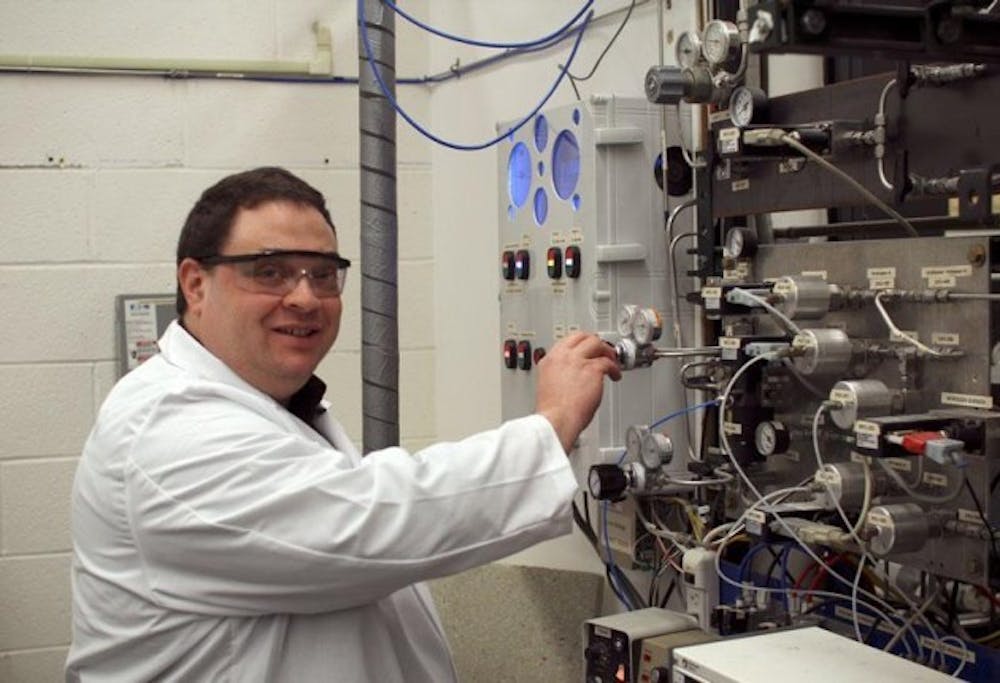The Center for Material Informatics (CMI) is doing what it can to revitalize the City of Buffalo.
Founded two years ago, CMI is a catalyst for regional growth and economic development in the Buffalo-Niagara region, spurring progress in manufacturing technology.
For local companies, the center is a resource for research and development, faculty and student expertise and modern facilities that allow for businesses to expand and reinvent their products in the area of materials informatics. In an effort to increase local business development and employment rates, it has formed up to 20 coalitions with companies in the area and around the country.
Dr. Marnie LaVigne, the associate vice president for economic development, is confident in the work the center is doing for this community in the field of urban revitalization. She said the center produces innovative methods for businesses to solve technological inefficiencies and encourage revenue growth.
"The NYS Center of Excellence in Materials Informatics (CMI) is a relatively new effort, but it already has made contacts with dozens of firms in the manufacturing sectors, who now can look to the university for cutting edge resources to help them drive innovative new and enhanced products and services," LaVigne said in an email. "A single point of entry to the myriad resources at UB via CMI is incredibly powerful in helping companies who may be facing an uncertain future if they don't grow their revenues through innovation while controlling their costs."
For LaVigne, UB is serving a pivotal role in the future of Buffalo's growth as a leader in the manufacturing and technology industries. Considered a "Rust Belt City," Buffalo's reputation doesn't always need be cast in a "negative light," she said, and initiatives like these can help turn around the stereotype.
"CMI will be working hand-in-hand with community partners, particularly the new advanced manufacturing institute just announced as part of the Buffalo Billion Investment Development Plan, to be at the hub of innovation that fuels our industrial transformation," LaVigne said. "Buffalo will shine on the national and international stage as the best place to learn, work and live."
Sarbajit Banerjee, an associate professor of chemistry and the co-director of the center, agrees with LaVigne.
In his seventh year at UB, he has come to have a new perspective in the university's actions and outreach efforts, and he feels the center can make a difference in the region. In his eyes, the university can serve as a community facilitator and economic booster - similar to how Stanford has shaped the Silicon Valley and MIT with Boston - he said.
He said the university acting as a resource for local companies could help them become "relevant and competitive," by giving them cost-effective resources and technologies they may not otherwise be able to afford.
"I can speak from the perspective of a faculty member. This is obviously a region that has been in the decline for a long time," Banerjee said. "I think what the university has realized, or has to be one of our major roles, is to be an engine for the economy and that we are already an engine for the economy and can do a better job."
Though he says there is more to be done, and it is the role of the university to think unconventionally when it comes to educating students and interacting with the Buffalo community.
"We haven't done that as well because, a lot of times, we have trained our young people to work jobs instead of creating their own jobs, and I think that mindset has to change," Banarjee said. "We've been in this old-fashioned state university mode for too long. We have to be this dynamic, entrepreneurial university."
Di Qi, a third-year chemical engineering graduate student, has worked in one of UB's labs for close to two years under co-director of CMI and professor of chemical and biological engineering Mark Swihart.
Qi has had the opportunity to immerse himself in material technology at the lab, experimenting, writing and reviewing papers, and gathering research that can potentially evolve into bigger projects.
He said his work in Swihart's lab has prepared him for his future career and hopes the research and development that comes from the lab will improve the Buffalo region.
Swihart said the opportunities through the center are great for both students and businesses. Companies are able to access licenses or some sort of payment in exchange for the university's services, while students can have hands-on learning experiences in their field. He hopes manufacturing companies will settle in Buffalo and the services UB provides will influence this decision.
"The idea is very simple: If we can create manufacturing jobs in high-tech areas, those are hard to move relative to other things," Swihart said. "Part of the idea is a bootstrap process. If you have more opportunities, you reverse some of that brain drain. If you were to reverse some of that, you become a more attractive place for someone to locate. It bootstraps its way up. The more students that stay, the more attractive we are as a place for high-tech companies to locate."
For the CMI team, the only way to go is up and there are no bounds for UB's influence on the City of Buffalo.
"We want to help local businesses that exist ... We want to create new business," Banerjee said. "We want to work with the biggest companies in the world that are out there, that have the resources to bring here, so that they decide that the next time they decide to choose to build a plant, they build it in Buffalo. I think the university can help a lot. We can do our part."
email: news@ubspectrum.com





